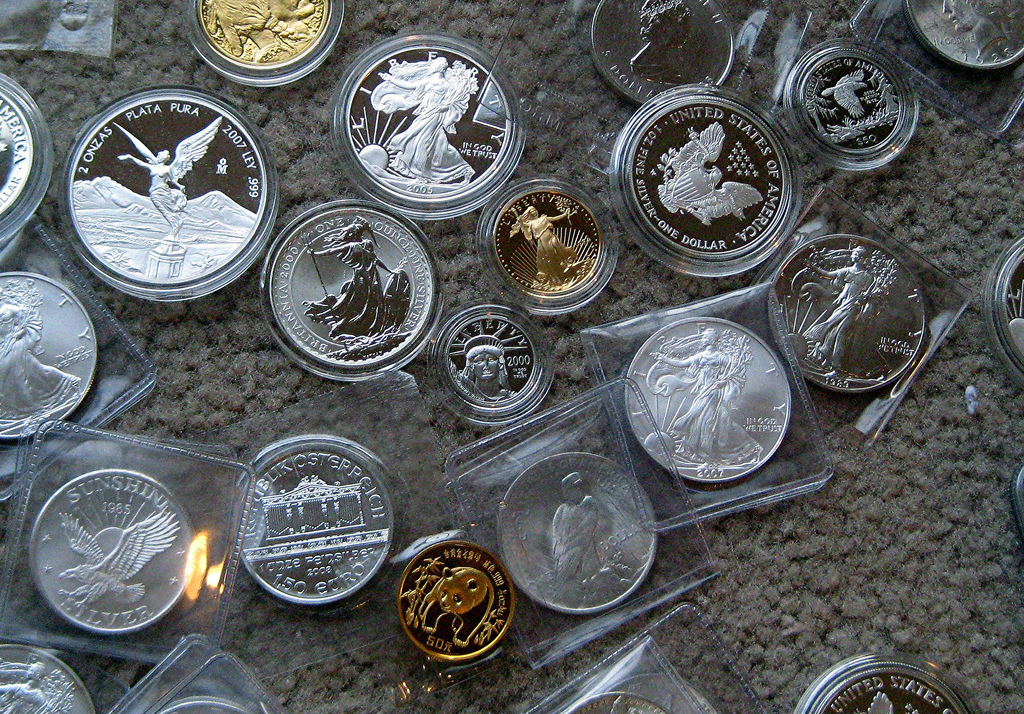We live in a world of central banks and paper money, so the question of why two different metals became money may seem moot. However, it is important to understand honest money if we are to break the cycle of financial crises and move forward to the gold standard.
Gold and silver share many physical properties. They are heavy, shiny, soft, conductive, and durable metals. It’s somewhat coincidental that they are so similar. Gold and silver fill different human needs, and evolved through different paths.
Money solves a problem called the coincidence of wants. For example, suppose the maker of leather moccasins is hungry. He can only trade directly with the fisherman when the fisherman happens to need a new pair of shoes. Barter is extremely inefficient and therefore limited.
Instead of directly trading shoes for fish, the shoemaker exchanges his shoes for salt, and then trades that salt for the fish he wants to eat. Indirect trade makes it possible for the shoemaker to trade with the fisherman, as both can agree on using salt. Unfortunately, this leads to a new problem. Using an intermediate good adds an extra trade to every transaction, and there is a frictional loss inherent in every trade (see my article for a full explanation).
Marketability is a measure of the amount of this loss, which is different for each good. The more marketable the good, the less the loss one incurs. For example, food is more marketable than footwear. Salt is more marketable than food. Gold is more marketable than salt.
Avoiding losses is a powerful motivation to use the more marketable good in preference to the less marketable. This is why everyone is motivated to find the one good with the least loss. Gold is the most marketable good, the best money.

Rusty’s Select Precious Metals 01.02.10 (Photo credit: sirqitous)
If gold is the best, then why is silver also money?
It is significant that a second commodity survives and coexists with gold to this day. No one wants to use the second best money, and lose more than the bare minimum. One explanation is that smaller denominations are possible with silver coins than with gold. It is important to have coins for grocery shopping, but there is a more important economic principle than just making small change. Silver is the most marketable good in one important case.
Everyone needs to save while working, to pay for expenses in retirement. Working people must set aside part of their weekly wages. Silver has an advantage over gold, which becomes clear with an example. Suppose Jen makes $1000 a week. She wants to set aside $100. This is a tiny amount of gold, well under 1/10 ounce. It’s an extremely small coin, and it costs more to manufacture and is harder to sell. To buy it, Jen must pay a big premium over the value of the gold in the coin. This cost comes straight out of her savings.
Fortunately, Jen can turn to silver. Her weekly savings will buy about 5 ounces of silver. Compared to a 1/10 ounce gold coin, a 1 ounce silver coin is a typical size. It’s priced closer to the value of the silver it contains. The bottom line is that Jen loses much less of her hard-earned money by using silver.
Wait a minute. Earlier, we saw that gold had the least loss, that gold is the most marketable good. Now silver seems to claim this title. This is not a contradiction. There are two types of marketability. For larger transactions, such as typical commercial trades, gold is superior. Gold imposes the least loss in these trades. In other transactions, far less value is exchanged. The most important is the typical small purchase used for savings. For saving, silver is superior to gold because it offers a smaller loss.
With this background, it’s possible to state the reason why there are two forms of money. Gold is the most marketable good when large values are traded. Silver is the most marketable good in small transactions.
See more for















